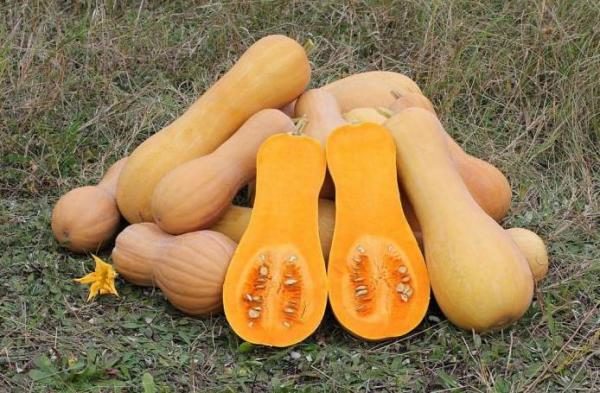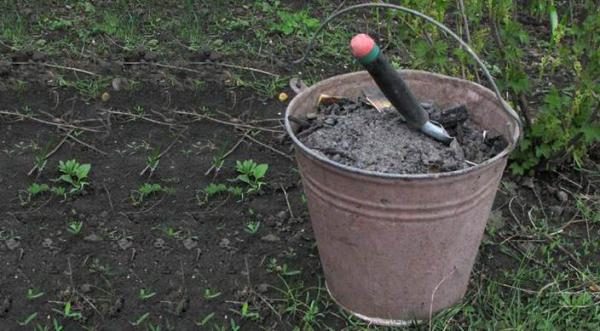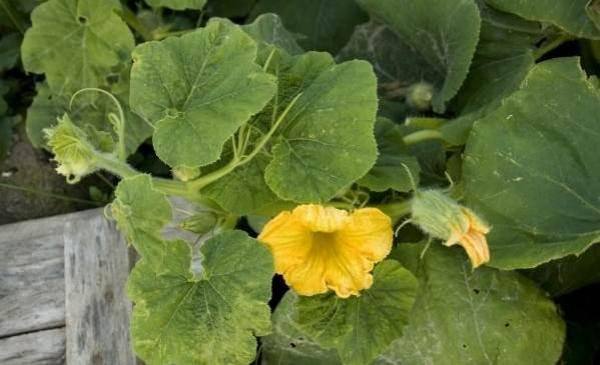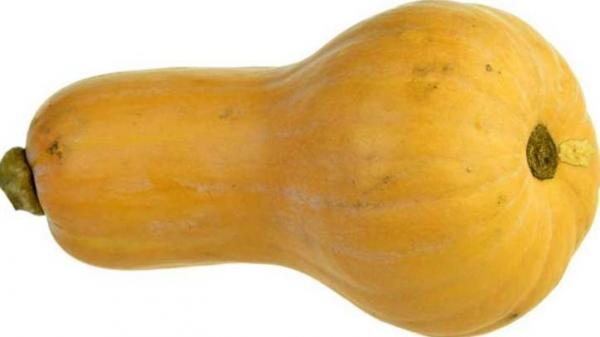Recently in Russia began to appear all new varieties of pumpkins for cultivation. And the vegetable itself has become noticeably more popular, of course, thanks to its composition, taste, and even appearance. One of the new pumpkin varieties on the Russian seed market is butternat.
Table of contents
Description and characteristics of pumpkin varieties butternut
This variety was bred in America in 1960 by crossing varieties of nutmeg cultured pumpkin and wild African ones. In its homeland, this variety is very popular and is one of the best in taste,and storage time.
Butternat is an early ripe variety with an unusual nutty flavor and rather sweet dense pulp. The form is pear-shaped and the seeds are concentrated in its lower part, which, of course, is a great advantage. Pumpkins of this variety are small, from 1 to 2 kg, but on one bush with proper care and favorable climatic conditions can grow up to 20 fruits.

Growing nutmeg is better than seedlings, especially in regions of Russia like Siberia, with a rather cool summer and unpredictable spring weather.
Useful properties and contraindications
Thanks to its composition, pumpternut pumpkin improves intestinal function and eliminates toxins. Adding this product to your daily diet helps regulate stools and relieves constipation. People who are prone to excess weight, as well as hypertensive, it is recommended especiallybecause it is an excellent dietary product, and its amino acids have a good effect on heart and brain activity. An element contained in vegetables potassium, normalizes the water-salt balance of the body and eliminates puffiness, removing excess fluid from the body.
Vitamin A contained in the fruit improves eyesight, skin and hair condition, omega-3 acids lower cholesterol, and phosphorus helps the formation of bone tissue, and therefore pumpkin consumption is extremely useful for fractures.

It must be said that, despite the abundance of useful qualities of this product, there are some contraindications to its use.
Growing conditions

Seeds for seedlings, after preheating, careful selection and soaking in early May, can be planted in small containers, given that one seed pot should be in one pot.In order for planting material not to die, future seedlings must be kept warm, preferably in a greenhouse. Once the soil is fully warmed up, the seedlings can be planted in the ground, avoiding frost.
Butternut is a vegetable crop that requires particularly frequent watering, so if the plant stays without water for a long time, it will most likely die or grow very slowly. Stop watering is only when future pumpkins reach the size of 15-20 cm in diameter. With regard to fertilizing, before the process of fruit set, agronomists advise to use more natural fertilizers, such as compost, manure or mineral fertilizers. Also, before the plant begins to bloom, you can sprinkle ashes on the bushes.
With proper care, the crop can be removed after 80-90 days from the time of sowing. If the fruit did not reach the ground, then it is better not to leave them on the bush, as the fruit that has not fully matured will reach perfectly and acquire the correct orange tint in any dry, moderately cool storage place.

Diseases and pests
Like any other plant, batternat, with improper care, is prone to diseases, among which the most popular are:
- bacterial, damaging the leaves and changing the shape of the fruit, which also affects the taste and benefits of the product;
- fungal, forming white bloom on the plant and causing rot.
To prevent diseases, the plant needs to be watered in time, rid of weeds and loosen. In addition, agrochemists advise even to treat the seeds before planting with a special compound resistant to bacteria.
Among the pests that are extremely dangerous for pumpkins, one can distinguish spider mites and aphids. Prevention from the appearance of these pests is the timely disposal of the plant from the "sick" leaves and proper watering. But pollinating the plant with chemicals is not recommended.

Reviews
Svetlana (housewife, Stavropol Territory). This year, for the first time, my husband and I tried to grow pumpkin butternut on our site; we were quite satisfied with the result. Of course, on the one hand, this variety is very capricious, but on the other hand, its safety and small amount of fruit,allowing us to prepare a dish from the whole vegetable at once is a good advantage for us.
Nikolay (pensioner, Novosibirsk region). I spend every summer in the country, so the cultivation of such a demanding care variety did not become a problem for me. My wife and I have been growing pumpkins for a long time, but we have recently met this variety. I recommend it to grow more likely experienced gardeners, since the care of a plant requires experience and knowledge.
Marina (teacher, Perm). I work at a school as a biology teacher, and therefore this sort of interest to me first, rather, from the outside, attracted an unusual form. We tried with the children to grow it on the school grounds, not everything was possible, but the harvest was gathered, although much less than it had been planned.
Galina (retired, Tomsk) I saw the seeds of an unusual pumpkin batternat at the seed fair in the spring and decided to try growing it. She suffered for a long time with taking care of her, but she hoped that I would receive the most delicious fruits. Alas, the taste of this variety has upset me. It turned out to be too hard and not at all juicy. I realized that it is better to trust the time-tested varieties.
Sergey (master of yoga, Kemerovo). I am a vegetarian and I am always attracted to various new plant varieties.He grew a pretty decent harvest butternat in the country. Loved the unusual taste. I use it for food, both raw and cooked, and I plan to plant it a little more next year, because it is beautifully stored.

So, even if you are not a fan of pumpkin dishes, the batternat variety will change your perception of this product. In addition, without having your own summer cottage and opportunities for cultivation, you can buy a beautiful pumpkin of this variety in any hypermarket, as some countries that are champions in its cultivation, supply nutmeg for export in Russia at a rather low price.
